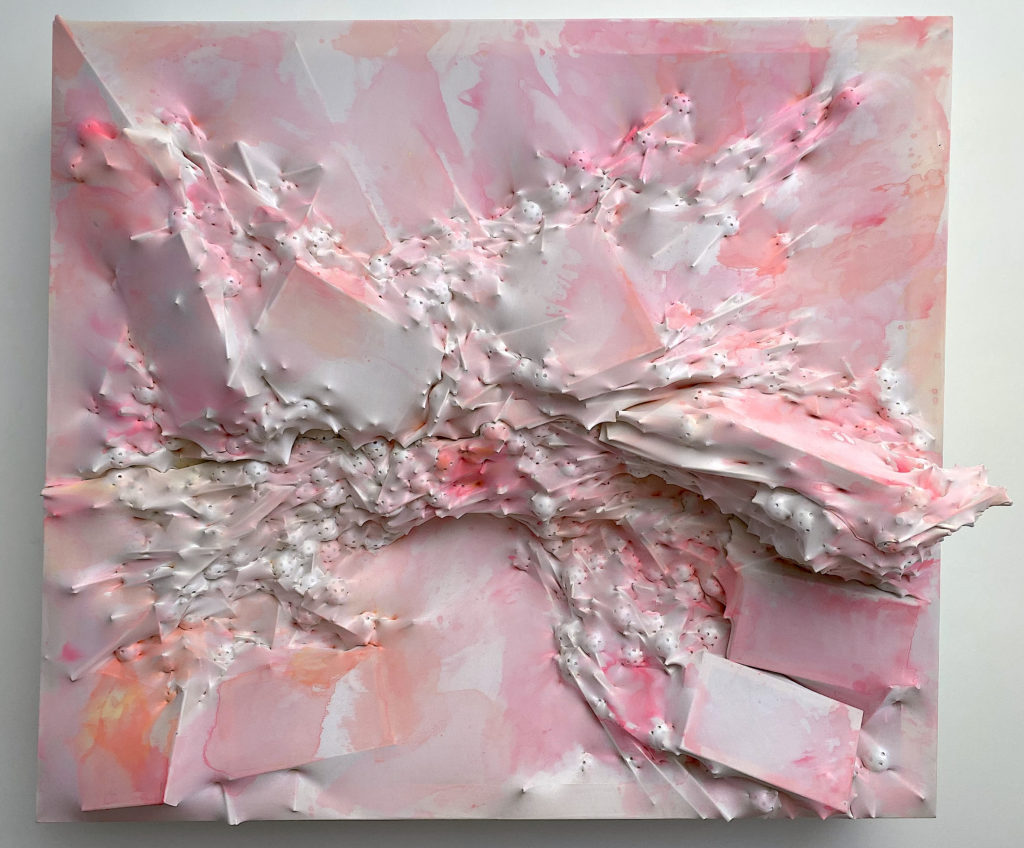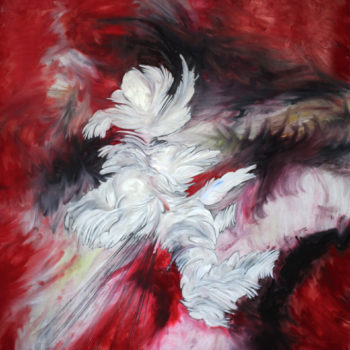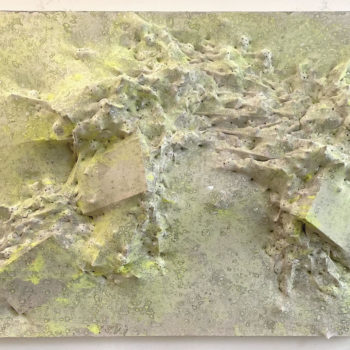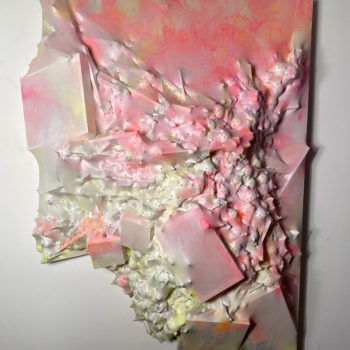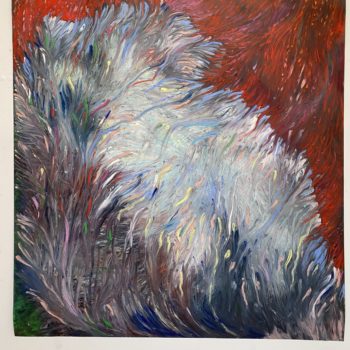Winston Wächter is pleased to present a digital exhibition of works by artist Julia von Eichel’s. Julia’s work is concerned with the tension between chaos and control. Her process is highly focused from initial creation to the final piece. Furthermore, the juxtaposition of precision and serendipitous expression is constantly at play.
Recently, von Eichel has been pushing even further into this tension, as well as between tradition and new technique, by constructing her forms within the confines of stretchers. “Canvases” are pulled, stretched, ballooned, retracted, and sewn into landscapes that emerge from, and are buried within, four borders. Sometimes borders are breached and sometimes they’re erased completely.
She has also been adding color, partially as a response to the natural world that has surrounded her more and more since quarantining in Upstate New York: dramatic sunsets with hot pinks and yellows.
Her time upstate was an unusual mixture of creative stagnation and complete inspiration by the nature that surrounded her. She has always invented her techniques; one aspect of her sculptures is the actual canvas, made of fabric, wiffle balls, string and glue, and wooden dowels. But while quarantined—afraid of the world, worried about her children, and generally in a confused creative mindset—her technique retreated into a process of rote construction. Making her unique canvases felt more like a chore than a labor of love. At the same time, she was living on and shaping the land, breathing more fresh air than ever (ironically), digging, planting, watching the light change, listening to the surroundings. When she returned to Brooklyn, all those natural influences were still there, and she had a set of her warped and complex canvases on which to expel those emotions.
Pushing yet further into pure color, she’s also created a series of oil pastels on mylar that swirl under the pressure of her fingers. She thinks of these pieces, still, as sculptures, even though they’re two-dimensional, because she feels the pastels on her hands as it slides on the slippery plastic surface of mylar—an inherently sculptural feel. The fact that they’re all on one plane is just a byproduct of the material.
